Bestway Sand Filter Manual: A Comprehensive Guide
Bestway sand filters offer an effective way to maintain clean and clear pool water. They utilize silica sand to filter out debris and impurities, ensuring a pleasant swimming experience. These filters are designed for ease of use and durability.
The owner’s manual is crucial for safe and efficient operation. It provides essential information on installation, operation, maintenance, and troubleshooting. Consulting the manual helps prevent damage and ensures optimal performance of the sand filter.
Bestway sand filters are a popular choice for maintaining clean and clear water in above-ground pools. These filters use silica sand to effectively remove dirt, debris, and impurities from the pool water, providing a healthier and more enjoyable swimming experience. The recommended sand size for Bestway Flowclear Sand Filters is between 0.45 mm and 0.85 mm, ensuring optimal filtration performance. Bestway designs its sand filters with user-friendliness in mind, offering various models to suit different pool sizes and filtration needs. Regular maintenance, including backwashing and sand replacement, is essential to keep the filter operating efficiently. Proper installation and adherence to safety guidelines outlined in the owner’s manual are crucial for the longevity and safe operation of the sand filter. Additionally, understanding the different operating modes and troubleshooting common issues, as detailed in the manual, can help pool owners maintain crystal-clear water throughout the swimming season.
Understanding the Importance of the Manual
The Bestway sand filter manual is an essential resource for ensuring the safe and effective operation of your filtration system. This manual provides critical information on various aspects, including proper installation procedures, safety precautions, and detailed operating instructions. By carefully following the guidelines in the manual, you can prevent potential damage to the sand filter and avoid safety hazards. The manual also outlines essential maintenance procedures, such as backwashing and sand replacement, which are crucial for maintaining optimal filtration performance. Furthermore, the troubleshooting section of the manual offers valuable guidance on resolving common issues, saving you time and money on repairs. Accessing and understanding the Bestway sand filter manual is crucial for maximizing the lifespan and efficiency of your filtration system, ensuring a clean and enjoyable swimming pool experience. You can often find these manuals online at www.bestwaycorp.com.
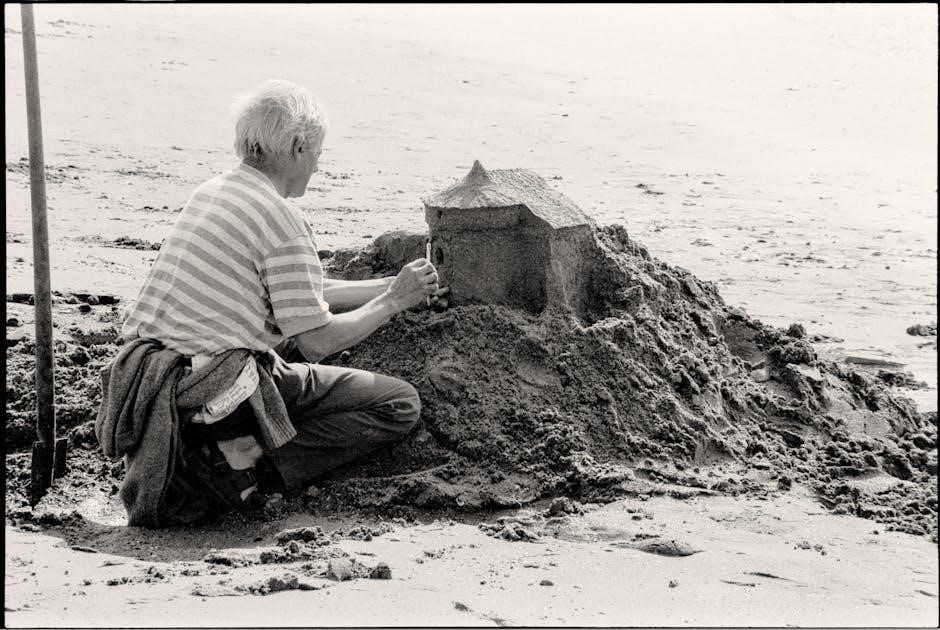
Safety Precautions
Prioritize safety when operating your Bestway sand filter. Always disconnect the power before maintenance. Keep the filter away from sharp objects, oil, and heat sources. Ensure proper grounding and GFCI protection.
General Safety Warnings
Before installing or using the Bestway sand filter, carefully read all safety instructions. Ensure the filter is unplugged before any maintenance to avoid injury or death. Never operate the filter if the GFCI test fails; contact Bestway customer service. Keep the filter away from children and pets, preventing unauthorized access and potential hazards. Do not bury the power cord or allow it to contact sharp objects, oil, or moving parts. Handle the filter with care, avoiding pulling or carrying it by the power cord. Always unplug the filter before moving or storing it. In case of filter malfunction, prevent people from entering the pool until resolved.
GFCI Testing and Importance
The Ground Fault Circuit Interrupter (GFCI) is a critical safety feature. It protects against electrical shock by monitoring the current and quickly interrupting the circuit if a fault is detected. The GFCI must be tested before each use to ensure proper function. To test, press the test button on the GFCI; the indicator should turn off. If the GFCI fails the test, do not use the sand filter and contact Bestway Aftersales Service. Regular testing of the GFCI is essential for safeguarding users from electrical hazards. Never bypass or disable the GFCI, as this compromises safety. A properly functioning GFCI is vital.
Electrical Safety Considerations
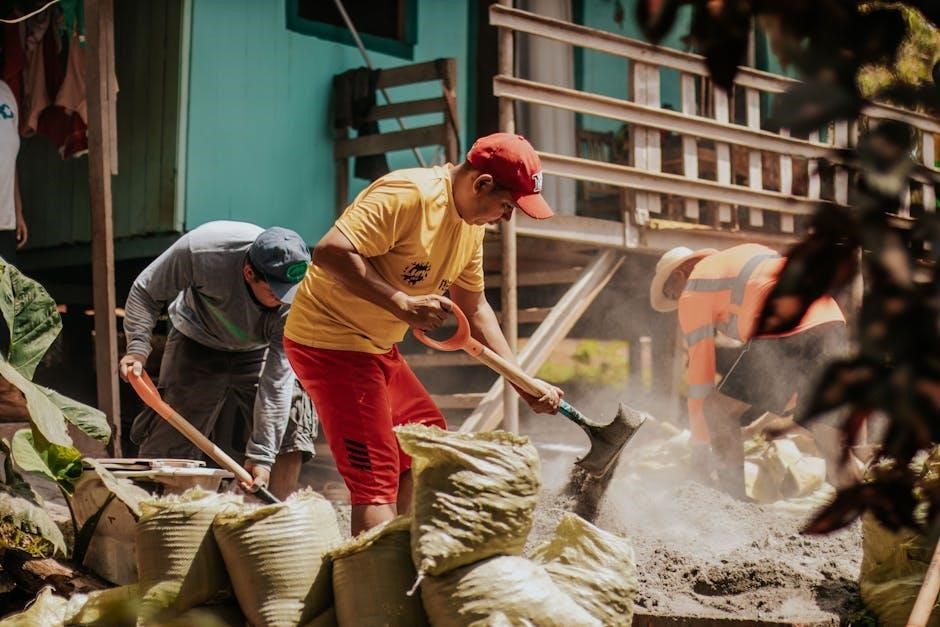
When operating the Bestway sand filter, strict adherence to electrical safety guidelines is paramount. Always ensure the filter is connected to a grounded outlet with a properly functioning GFCI. Never use extension cords; plug the filter directly into a grounded outlet. Keep the power cord away from water and damp areas to prevent electrical hazards. Before performing any maintenance, always disconnect the filter from the power source. Inspect the power cord regularly for damage; if damaged, replace it immediately. Do not bury the power cord. Handle the filter with care and avoid pulling or carrying it by the cord; These practices will help protect you.
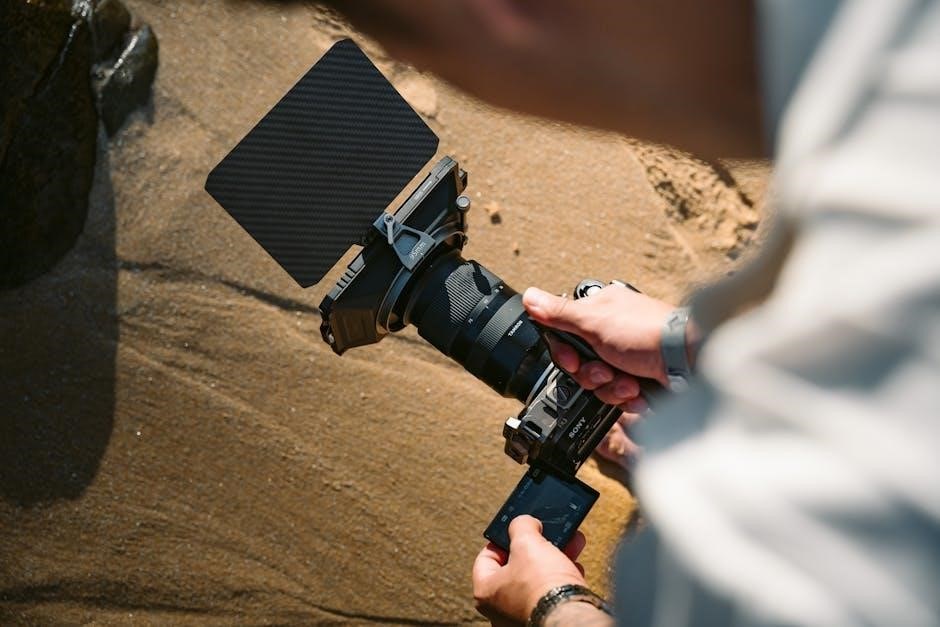
Installation Guide
Proper installation is essential for the Bestway sand filter’s performance. This guide covers pre-installation checks, location selection, and a step-by-step process. Accurate setup ensures efficient filtration and prolongs the filter’s lifespan.
Pre-Installation Checklist: Verifying Components
Before beginning the installation of your Bestway sand filter, it is crucial to verify that all necessary components are present. Refer to the parts reference overview in the owner’s manual to identify each item. Ensure you have all connectors, hoses, and the filter unit itself. Missing parts can delay the setup and affect performance.
Carefully unpack all components and check for any damage that may have occurred during shipping. If you notice any damaged or missing parts, contact Bestway customer service immediately for assistance. Having all the correct parts readily available will streamline the installation process.
Double-check that you have the appropriate amount of sand with the correct sand size between 0.45 mm and 0.85 mm. Preparing everything in advance ensures a smooth and efficient setup, minimizing potential issues later. This diligent approach guarantees optimal filtration.
Location Selection: Ventilation, Drainage, and Accessibility
Choosing the correct location for your Bestway sand filter is critical for its performance and longevity. Ensure the selected area provides adequate ventilation to prevent overheating. Proper airflow helps the motor run efficiently and extends the lifespan of the sand filter components. The area should also have good drainage to prevent water accumulation, which can damage the unit.
Accessibility is another key consideration. Position the sand filter in a location that allows easy access for maintenance, such as backwashing and sand replacement. The site should be at least 2 meters away from the poolside, positioned on solid, level ground, and protected from direct sunlight and extreme weather.
Avoid placing the sand filter in an area prone to flooding or where it might be exposed to sharp objects. Consider proximity to a power source with GFCI protection for electrical safety. Careful location selection ensures safe and efficient operation.
Step-by-Step Installation Process
The installation process for a Bestway sand filter involves several key steps to ensure proper setup and functionality. First, carefully unpack all components and verify they match the parts list in the manual. Next, assemble the filter tank and connect the necessary hoses, ensuring all connections are secure and watertight. Add the specified amount of silica sand, typically between 0.45mm and 0.85mm in size, following the manual’s recommendations.
Connect the hoses to the pool’s inlet and outlet, making sure the connections are tight to prevent leaks. Place the sand filter on a level surface, at least 2 meters away from the pool. Prime the pump according to the instructions in the manual and test the GFCI outlet before operating. Finally, run the filter through a backwash cycle to remove any initial impurities.
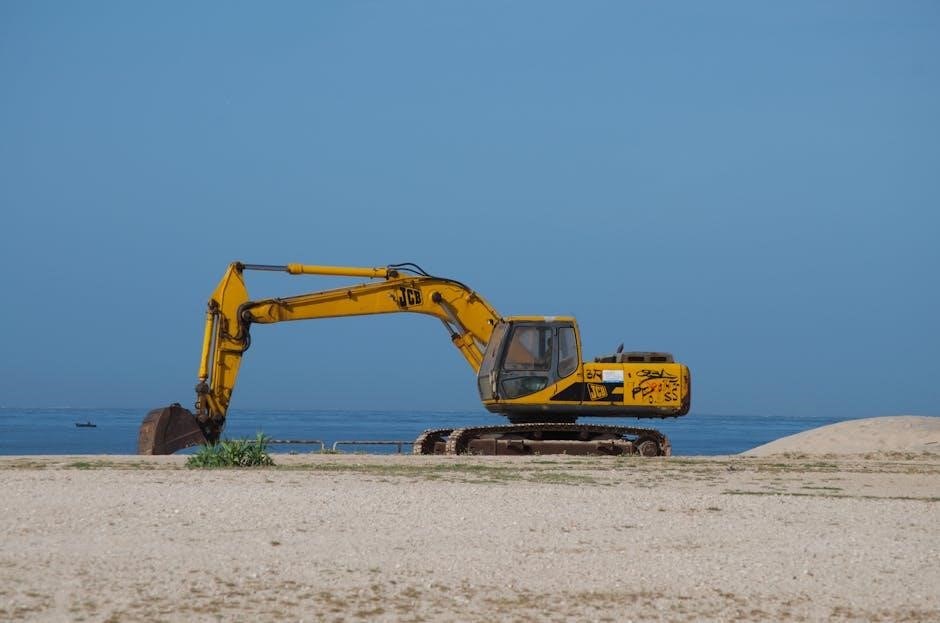
Operating Instructions
Proper operation ensures effective filtration and longevity. Understand initial setup, filter modes (filtering, backwashing, rinsing), and pressure guidelines. Regular monitoring and adherence to the manual are essential for optimal performance.
Initial Setup and Priming
Prior to initiating the filtration process, a meticulous setup is paramount. Begin by verifying the correct sand type and quantity, typically silica sand with a size between 0.45 mm and 0.85 mm, ensuring it aligns with the Bestway specifications. Carefully load the sand into the filter tank, adhering to the manufacturer’s instructions to prevent any spillage or uneven distribution.
Next, connect the hoses securely, ensuring they are properly tightened to avoid leaks. Once the sand is loaded and hoses are connected, prime the pump by filling it with water. This removes air pockets and allows the pump to operate efficiently. Refer to the manual for specific priming instructions, as procedures may vary slightly depending on the model. Double-check all connections and settings before switching on the sand filter for the first time.
Filter Operation Modes (Filtering, Backwashing, Rinsing)
Bestway sand filters offer multiple operation modes to maintain optimal water quality. The primary mode, Filtering, directs water through the sand bed, trapping dirt and debris. Regular use of this mode keeps the pool water clean. Backwashing reverses the water flow to flush out accumulated impurities from the sand. It’s recommended when the filter pressure exceeds the specified limit, typically 6.5 PSI.
Rinsing is performed after backwashing to resettle the sand bed. This prevents any remaining debris from entering the pool. Each mode serves a distinct purpose in maintaining the efficiency and longevity of the sand filter system. Always consult the manual for the recommended duration and frequency of each mode to ensure effective pool maintenance.

Operating Pressure Guidelines
Maintaining the correct operating pressure is vital for the efficiency and lifespan of your Bestway sand filter. The normal working pressure should remain below 6.5 PSI (0.45 Bar). Higher pressure indicates a clogged filter, necessitating backwashing. Regularly check the pressure gauge to monitor the filter’s condition.
If the pressure consistently exceeds the recommended level, it may indicate excessive debris accumulation or issues with the sand. Ignoring high-pressure readings can lead to reduced filter performance and potential damage. Ensure you understand the pressure guidelines outlined in the manual and take prompt action when deviations occur. Maintaining optimal pressure ensures clean water and prolongs the filter’s lifespan.
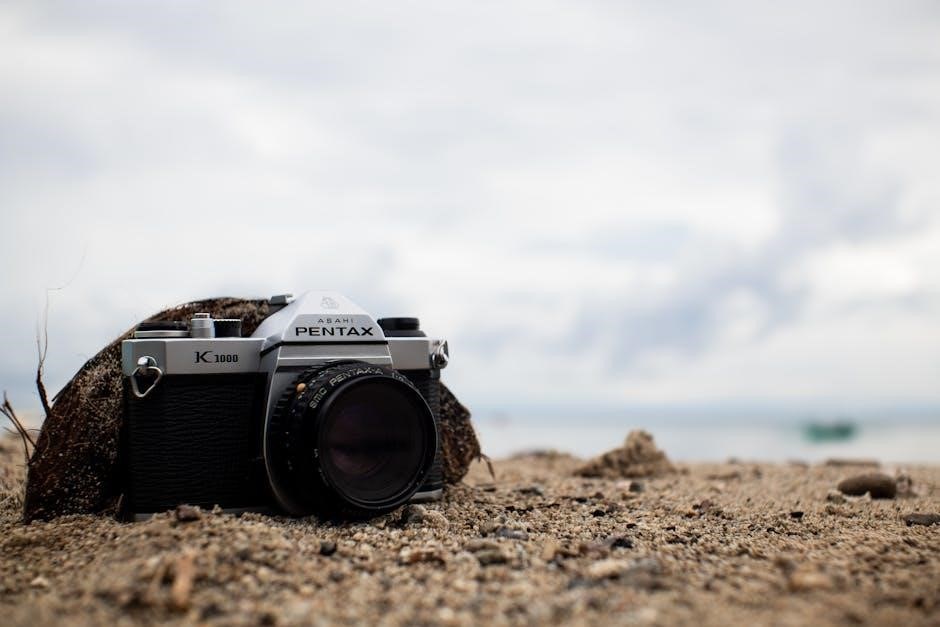
Maintenance and Troubleshooting
Regular maintenance is crucial for prolonging the life of your Bestway sand filter. This includes backwashing, rinsing, and periodically checking the sand condition. Consistent upkeep ensures optimal filtration and prevents common issues from arising.
Regular Maintenance Procedures
To ensure the longevity and optimal performance of your Bestway sand filter, regular maintenance is essential. This includes backwashing the filter regularly to remove trapped debris. Backwashing reverses the water flow, flushing out impurities and keeping the sand clean.
Rinsing the filter after backwashing is another critical step. Rinsing helps resettle the sand bed and clears any remaining particles, ensuring efficient filtration. Also, inspect the sand for clumping or contamination; replace it every few years or as needed.
Maintain proper water chemistry to prevent scale buildup and algae growth. Regularly check and clean the filter’s components, such as the pump and valves. These simple steps will keep your sand filter running smoothly and efficiently, providing you with clear and clean pool water throughout the swimming season. Neglecting maintenance can lead to reduced performance and costly repairs, so make maintenance a priority.
Sand Replacement Guide
Replacing the sand in your Bestway sand filter is a necessary part of maintenance. Over time, the sand loses its effectiveness and needs replacing to maintain optimal filtration. The recommended size of sand for Bestway Flowclear sand filters is typically between 0.45 mm and 0.85 mm.
To replace the sand, first, switch off the filter and unplug it from the power outlet to prevent any accidents. Next, drain any remaining water from the filter tank. Remove the top cover and carefully scoop out the old sand, ensuring no debris falls into the standpipe. Inspect the standpipe and laterals for damage, replacing them if necessary.
Fill the tank with the correct amount of new sand as specified in your manual. Ensure the sand is level and properly distributed. Reassemble the filter, prime the pump, and start the system. Regular sand replacement will keep your pool water clean and clear.
Troubleshooting Common Issues
Several common issues can arise with a Bestway sand filter. One frequent problem is cloudy water, often caused by insufficient backwashing or old sand. Ensure you are backwashing regularly and consider replacing the sand if it’s past its prime.
Another issue is low water flow, which can be due to clogged pipes or a dirty filter. Check for any obstructions in the hoses and clean the filter thoroughly. If the pump isn’t working, verify the power supply and check the GFCI for tripping.
Leaks can also occur. Inspect all connections and seals, tightening or replacing them as needed. If the pressure is too high, backwash the filter to reduce it. Always consult your Bestway sand filter manual for specific troubleshooting steps and solutions related to your model. Addressing problems promptly ensures efficient operation and extends the life of your filter.

Winterizing Your Sand Filter
Properly draining and storing your sand filter is essential to prevent freeze damage during winter. Backwash the filter, then disconnect and drain all water. Store it in a dry, protected area.
Draining and Storage Procedures
To properly winterize your Bestway sand filter, begin by backwashing the unit to clean the sand bed. Disconnect the filter from the pool and detach all hoses. Open the drain valve at the bottom of the filter tank to completely remove all water. Ensure no water remains inside the tank or pump housing to prevent freezing.
Once drained, inspect the filter for any damage and clean it with a mild detergent. Allow all components to dry thoroughly before storage. Store the sand filter in a dry, sheltered location, away from extreme temperatures and direct sunlight. This will protect the filter from damage and extend its lifespan. Cover the unit with a tarp or plastic sheet for added protection. Properly storing your sand filter ensures it will be ready for use when the swimming season returns.
Preventing Freeze Damage
Preventing freeze damage to your Bestway sand filter is critical for maintaining its functionality and longevity. Start by ensuring all water is completely drained from the filter, pump, and hoses, as any remaining water can freeze and expand, causing cracks and damage. Disconnect all hoses and open any drain plugs to facilitate thorough drainage.
Consider using a wet/dry vacuum to remove any residual water from hard-to-reach areas. Store the filter indoors in a climate-controlled environment, such as a basement or garage, where temperatures remain above freezing. If indoor storage is not possible, insulate the filter with blankets or foam padding and cover it with a waterproof tarp to protect it from the elements. Regularly check the filter during periods of extreme cold to ensure it remains protected and free from ice buildup. Taking these precautions will help safeguard your sand filter from costly freeze damage.

Finding Your Manual and Support
Locating User Manuals Online (Bestway Website)
User manuals for Bestway sand filters can typically be found on the official Bestway website. Navigate to the support section and search using your filter’s model number to locate and download the appropriate manual.
Locating User Manuals Online (Bestway Website)
Finding your Bestway sand filter manual online is a straightforward process. Start by visiting the official Bestway website, typically found at www.bestwaycorp.com. Navigate to the “Support” or “Customer Service” section of the website. Look for a “Downloads” or “Manuals” area within this section.
Here, you will likely find a search function or a categorized list of products. Enter your sand filter’s model number into the search bar. This number can usually be found on a sticker located on the filter unit itself. Once you’ve entered the model number, initiate the search.
The website should then display the corresponding manual for your specific Bestway sand filter. You can then view the manual directly on the website or download it as a PDF file for offline access. Ensure you download the correct manual to avoid any discrepancies in instructions.
Contacting Bestway Customer Service

If you encounter issues with your Bestway sand filter or need assistance beyond what the manual provides, contacting Bestway customer service is a viable option. Begin by visiting the Bestway website and locating the “Contact Us” or “Customer Support” section. Here, you’ll find various contact methods, including phone numbers, email addresses, and online contact forms.
When contacting customer service, provide detailed information about your sand filter model and the specific issue you are experiencing. Having your purchase date and any relevant order numbers handy can expedite the process. Be prepared to describe the problem clearly and answer any questions the customer service representative may have.
Bestway may also offer a FAQ section on their website, addressing common questions and troubleshooting tips. Before reaching out, review this section to see if your issue has already been addressed. Remember to note any reference numbers or instructions provided by customer service for future reference.

No Responses